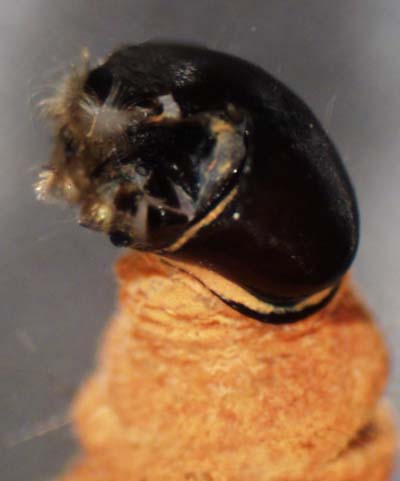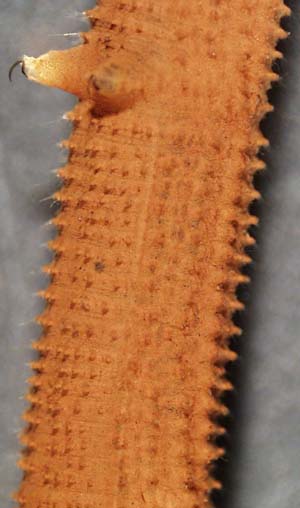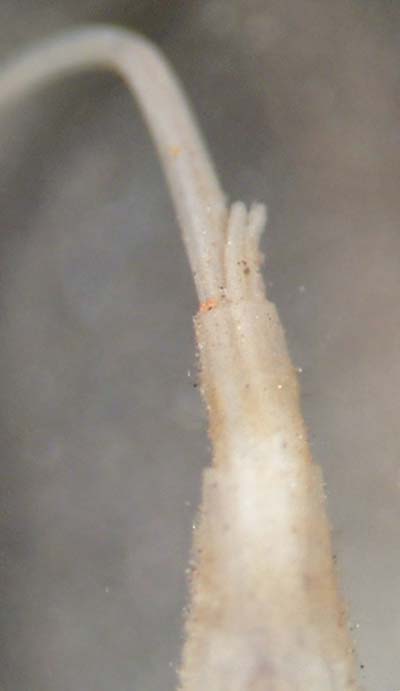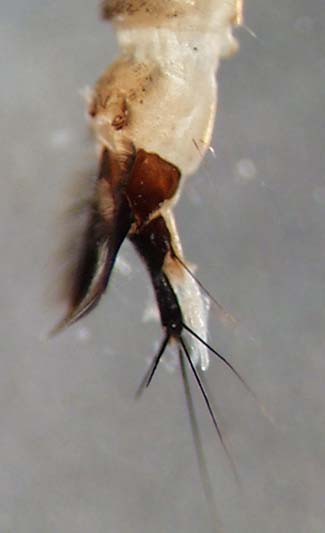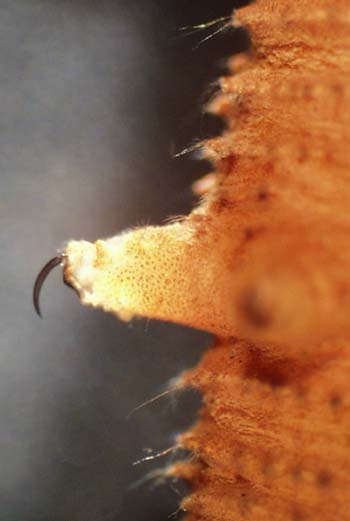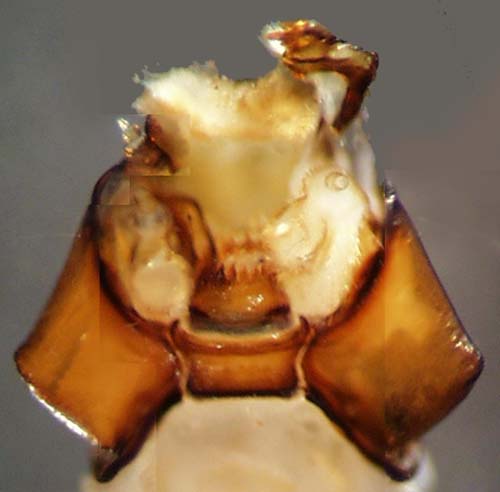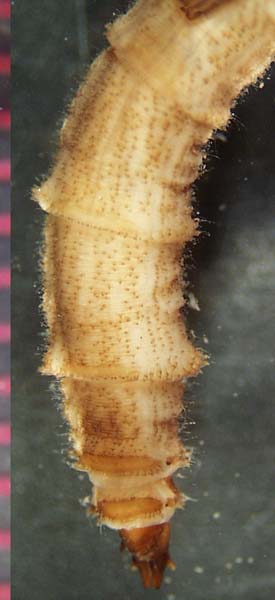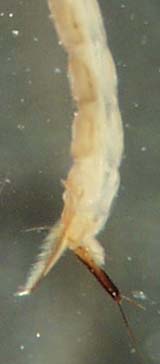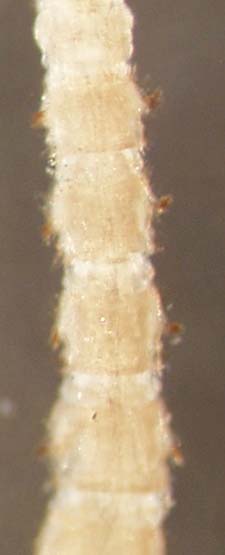
THE XERCES SOCIETY FOR INVERTEBRATE CONSERVATION Aquatic Invertebrates in Pacific Northwest Freshwater Wetlands |
| Identify taxa |
Ptychopteridae (phantom crane flies) |
Phantom crane fly larvae are air breathers that burrow in organic muck among plants in wetlands and lakes. The larvae have a prominent hard capsule that is distinct from the thorax. Their bodies are very long (15-60 mm) and thin and covered with rows of hairs that are sometimes at the ends of fleshy or hard bumps. A pair of prolegs is present on each of the first three abdominal segments. The body ranges from light yellow to black, and ends in a long breathing tube that can be pulled into the body or extended above the substrate when needed. Adult phantom crane flies resemble Tipulid crane flies, although they sometimes have a black and white pattern on their legs. One species has a modified section on each leg that allows it to drift to new habitats, which is handy because they are fairly awkward fliers. They have a pair of prolegs (each with well developed hooks) on each of the first three abdominal segments (see below). |
Size: large to xlarge Identifying feature(s): prominent, hardened head; long, thin body that terminates in long breathing tube Habitat: slack waters of rivers and streams; wetlands Tolerance to pollutants: moderate to tolerant |
 |
|
© 2007 Xerces Society
Contact info@xerces.org

